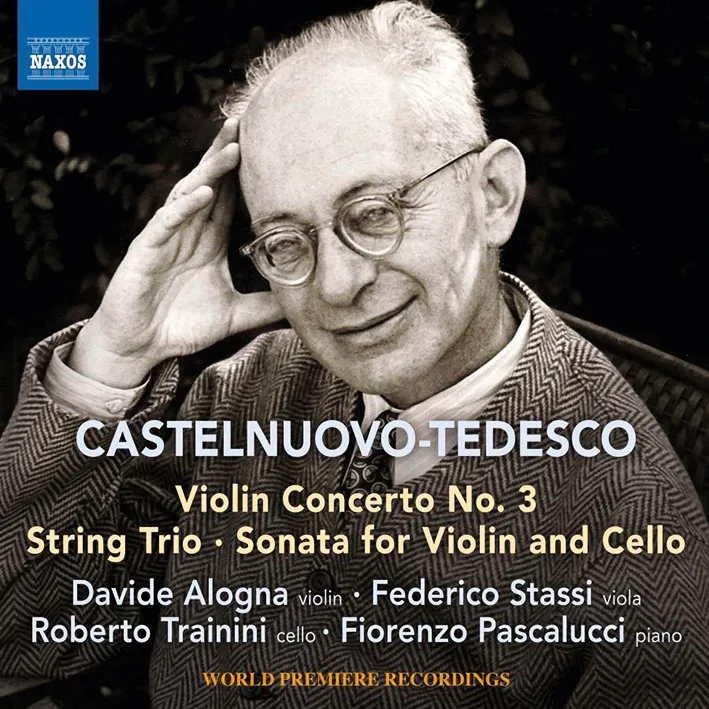
Castelnuovo-Tedesco Violin Concerto No. 3; String Trio; Sonata for Violin and Cello Davide Alogna (violin), Federico Stassi (viola), Roberto Trainini (cello), Fiorenzo Pascalucci (piano) Naxos 8.574003 78:21 mins
Cut off from his Italian/Jewish roots and culture, Mario Castelnuovo-Tedesco once referred to his experience of emigration to America as like ‘a dress rehearsal for death’. The music presented here, composed in the decade following his flight from Fascist Italy in 1939, tells an exactly opposite story. Conservative in style, these pieces are written with such lyricism and enjoyment for the task that their dimensions can get a little out of hand: the Sonata for Violin and Cello, one of numerous chamber works sparked into life by congenial musical gatherings in Los Angeles, bubbles away for nearly 35 minutes. Since the composer’s day job, aside from teaching, was writing brief cues for Hollywood films, you can understand his itch to luxuriate.
Even when material is stretched thinly, the lyrical flow in these works – all unpublished, and previously unrecorded – remains irresistible, especially in these passionate Italian performances, captured in resonant acoustics. Castelnuovo-Tedesco’s command of instrumental resources is always impressive. The varied string registers are imaginatively exploited; while the unusual ‘concerto’ written for Jascha Heifetz, who never played it, easily conjures a grandiloquent orchestral tapestry, cadenza and all, just from the gestures of violin and piano. The work’s finale, spiced with a few jazz rhythms, marks the only point where the American scene enters; the entire piece was designed as a musical recreation of the composer’s experiences as an emigrant sailing into New York in 1939. Otherwise, traditions of the old world rule. Deep in his heart, his musical heart, Castelnuovo-Tedesco never left Italy at all.
Geoff Brown